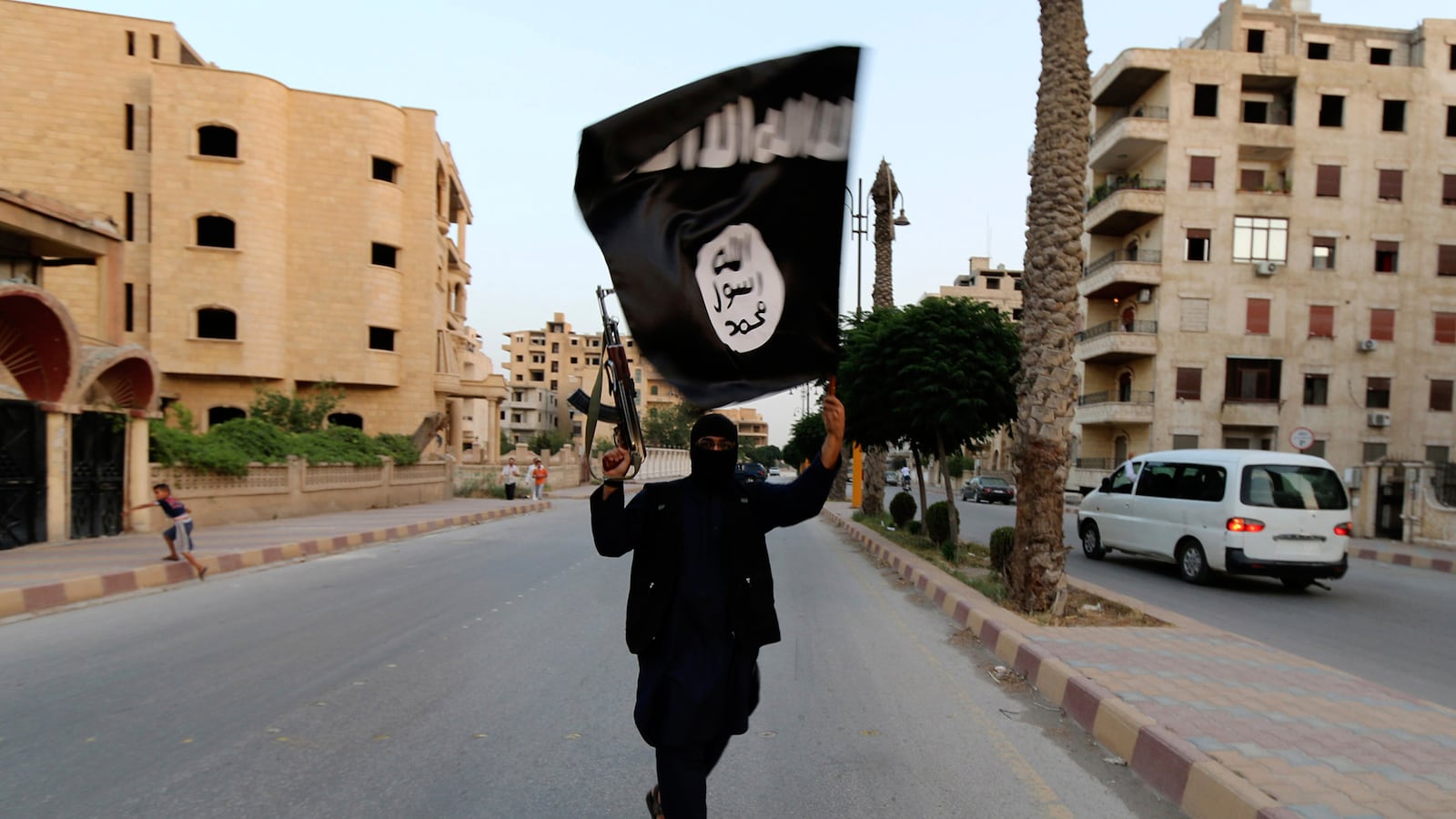For more than two years, one region in Syria—the south—has managed to push back the so-called Islamic State’s incessant attacks and meticulous planning. But that situation might be quietly changing with the recent capture al-Qaryatain. It’s a town in Homs province that is roughly equidistant from the ancient city of Palmyra, which the terror army took in late May, and Damascus. Most of the estimated 40,000 inhabitants, many of them internally displaced persons from other areas of Syria, fled. Another 230—including 30 Assyrian Christians—have been reportedly captured. Hundreds of Assyrian families have also fled the neighboring town of Sadad in fear.
The failure of ISIS to establish a presence in southern Syria has been largely thanks to the preemptive action taken by groups operating in that region. Elsewhere in the war-ravaged country, rival rebels have succumbed to ISIS by ignoring the group’s characteristic method of divide and conquer: by deploying sleeper cells which infiltrate opposition-held areas and cultivate locals such that towns and villages go over to ISIS well in advance of any military blitzkrieg. The “civil war within a civil war” that has categorized the latter-half of the Syrian conflict has been won and lost on the basis of counterintelligence. ISIS has proved more adept when it comes to both dispatching spies and informants and weeding them out. Many rebels have proved disastrously ill-equipped—or simply too corrupt—to forestall ISIS’s creeping takeovers of their territory. At least this has been the case in northern Syria.
In the south, anti-ISIS forces have proved more vigilant. In Deraa, in Quneitra, and in the Damascus suburbs, two powerful Salafist factions—Jaish al-Islam and Jabhat al-Nusra, al-Qaeda’s franchise in Syria—have systematically attacked anyone suspected of ISIS sympathies. The recent takeover of the Yarmouk Palestinian refugee camp demonstrated that ISIS can still launch surprise attacks from within seemingly well-guarded territory, but hasn’t got the sufficient resources to take over terrain and hold it near Damascus. Moreover, U.S., European and regional intelligence services have provided logistical and financial support to the Southern Front, a collection of 54 nationalist rebel groups totaling 35,000 fighters, which are directly accountable to the Military Operations Command in Jordan.
Isam El Rayyes, a spokesperson for the Southern Front, told The Daily Beast that for the most part, help has been modest but steady. “We don’t get any weapons, just ammunition,” El Rayyes said. “And the condition for continuing to get anything is that we not try to advance on Damascus.” The reason for this is twofold: Washington’s reluctance to see the regime fall for fear that ISIS would be the main beneficiary of the ensuing chaos and Jordan’s national security interest to see Syrian insurgents to keep jihadists well away from its border and not dilute their garrisons by fanning out across the country.
Prior to the sacking of al-Qaryatain, ISIS had mostly been able to operate along strategic road systems linking the different areas in southern Syria from which it would wage opportunistic attacks against rebels supply lines—more nuisance than existential threat. Though the goal here has been to prevent rebels from coalescing to attack regime bases themselves, which is one of the reasons accusations abound in opposition circles that ISIS is really a catspaw of the regime.
In reality, ISIS and the regime have long maintained an informal detente so long as they were both at war with the common enemy of moderate (or not-so-moderate) revolutionary forces. And where ISIS has violated this detente, by sacking regime bases and slaughtering poorly resupplied Syrian Army soldiers, the regime has acquitted itself pathetically as an agent of counterterrorism, a fact even remarked upon by Assad’s loyalist Alawite constituency.
But the closer ISIS inches toward Assad’s seat of power, the more the regime seems willing to put up a fight. The Syrian Air Force has now begun dropping barrel bombs—its customary instrument for mass carnage in non-ISIS locations—on al-Qaryatain in the wake of the town’s fall. And ISIS followed up one modest seizure with an attempt at far more significant one: after taking al-Qaryatain it launched suicide attacks on the T4 Air Base, a major regime weapons depot.
Attempts at deterrence have seldom dissuaded ISIS from making a play for strategic dominance. Over the past months, the group has opted to take a long detour to achieve its goal of being present in southern Syria. Since it took over Palmyra, it started to advance westward towards Homs City, the sentimental capital of the Syrian revolution, seemingly leaving no doubt as to its destination: among its raised slogans was, “We are coming, O Homs.” Al-Qaryatain is just 70 kilometers away.
Though rather than make a foolhardy bee-line for a well-guarded provincial capital, ISIS seems likelier to attack regime’s bases central Syria, then march southward though the eastern Qalamoun region where it will be bolstered by local actors who operate largely as pro-ISIS sleepers; face little resistance from atomized and disorganized rebel forces; and decamp in the mountainous topography it loves.
The takeover of Palmyra in May enormously helped ISIS navigate a stretch of terrain many have thought of as a dusty tableland with priceless ancient ruins but of minimal martial value. Yet ISIS’s advances in Palmyra-Homs could give it an uncontested corridor through which to communicate with sleeper cells in Deraa, Qalamoun and Rif Dimashq, spreading parasitically among entrenched rebel and jihadist forces in those areas. And although its finances have been affected by the coalition war effort, ISIS remains, for now, the best-funded terrorist organization in the Middle East. This gives it another important advantage: it can easily buy the loyalty or obedience of ragtag or poorer Islamist and factions. Earlier this year, dozens of rebels defected to ISIS in the Mahassah, a region just 10 kilometers from al-Qaryatain.
At a symbolic level, establishing a perch in southern Syria carries weight for ISIS and its much-propagandized image as a “state.” Success here would mean not just inhabiting and ruling depopulated wastelands, but creeping right up to the doorsteps of conventional political and military powers. And even before those goals have been met, ISIS has shown again its strategic patience and ability to outwit its opponents, even under the punishing conditions of a multinational war to contain and destroy it.







